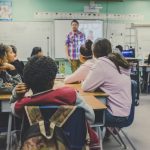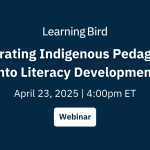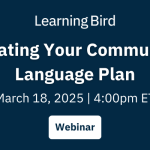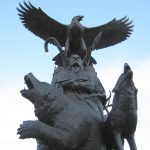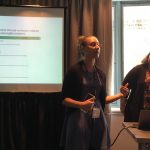Webinar Wrap-Up: Resources and Lessons
Last week, we were excited to host a webinar for our partnering communities. Learning Bird’s Education Account Leads Joelle Chemali and Rebecca Smith presented the session “Using Learning Bird to Guide Your Pedagogy.” They looked at the different ways educators can incorporate Learning Bird content into their everyday practice. They focused on pairing each subject with fun activities and lessons for middle and high school learners.
Using Learning Bird to Guide Your Pedagogy
Joelle and Rebecca knew they needed to include educators working in very different situations when preparing for this webinar. Internet connectivity and access to devices affect what types of resources educators can easily use in their classes. While presenting the webinar, they showcased many activities that did not require technology.
They also stressed that Learning Bird units guide instruction while enabling educators to adapt them to their learners. There is no one-size-fits-all solution, so educators can freely adapt the resources and resource kits in whatever way works best for their learners.
Education Resources
The presenters started by giving a brief tour of the Learning Bird platform’s fresh new look. Community names are up-front, allowing communities to find their resources and other communities’ resources faster and more effectively. They then jumped into subject-specific units to give educators ideas for engaging their learners differently.
The presenters explained that Learning Bird lessons are tools to introduce new topics, encourage engagement, prompt discussion, and check for understanding formatively or summatively. They also provided attendees with a handout with additional activities for each subject. Let’s take a look at some of these ideas.
Language Lessons
Learners nowadays are connected to their phones, tablets, and social media. It’s important to use this technology to rebuild language skills amongst younger generations. Different delivery methods engage learners through individual work, group activities, and role-play. The presenters walked attendees through a Learning Bird unit on the colours of food in Oji-Cree. It demonstrates a framework where educators and learners can alternate between whole-class activities, role-play, and individual work.
Whole-class activities include playing a video and having learners practice repeating pronunciation. Role-play involves the educator providing learners with a text or script and practicing in pairs. Educators can print out handouts or project them to facilitate individual work. The example handout includes fun activities like “Pictionary,” “find someone who,” and “classroom mingle.”
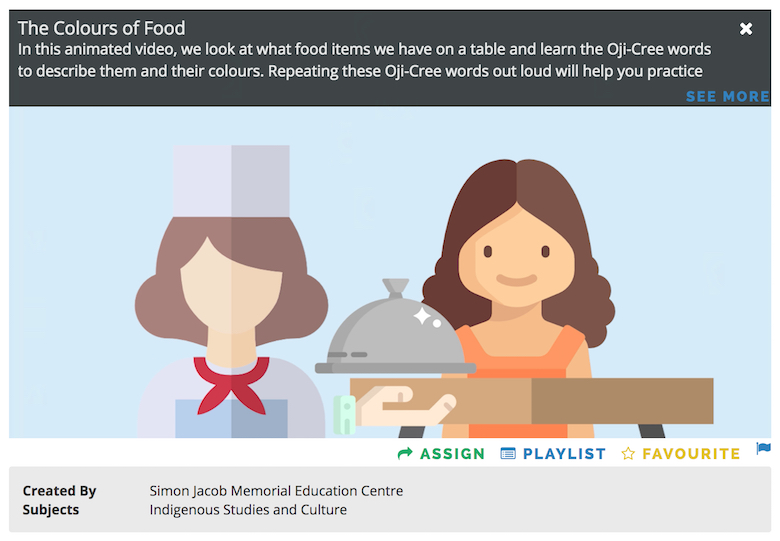
Culture Lessons
The featured unit is about well-being from an Indigenous perspective. It is an important topic to discuss with all learners across different communities. Educators guide learners to examine the spiritual, emotional, mental, and physical parts of their well-being.
The presenter mentioned that it is good to start with a class discussion. Ask learners what they currently do for self-care and discuss why it’s important. Educators can then follow this discussion with a video covering introductory concepts of Indigenous perspectives on well-being. Follow the video with a small group activity. Learners apply their knowledge and understanding of the connection between spiritual, emotional, mental, and physical well-being. Lastly, encourage learners to create their wellness plan. Educators should judge whether or not it is appropriate for learners to share their work, as this is a more personal matter.
The presenters emphasized that these units should frame the educator’s lessons and are adaptable. The handout includes additional open-ended activities that can work well in a culture class. “Tableau” has learners act out traditional activities or stories. Educators can set up an “obstacle course” where learners perform a traditional activity. Educators may consider setting up a gallery walk or displaying cultural materials and pictures for learners to view and respond to.

Math Lessons
Although math is not always the most exciting subject for learners, the presenter pointed out that we can engage learners in various ways. We need to explain to learners why they are learning a particular topic, what it means to them, and how they will apply their knowledge in the future.
The star quilt unit featured is cross-curricular. It starts with a video on the history of star quilts. Educators can play it for the class and follow it with a discussion. If possible or relevant, educators can invite Elders and Knowledge Keepers to share the history of the star quilt within the community. Then, the class can jump into the videos introducing specific mathematical concepts. Learners can follow along on the handout individually or in small groups. Lastly, learners make their star quilts using the step-by-step podcast and instructions on the accompanying handout. It’s easier to engage learners in some math topics than others. You can easily integrate the activities on the handout like “around the block,” “3-2-1 prompts,” and “one-minute problems” into everyday teaching.

English Lessons
The presenters looked at the novel Touching Spirit Bear by Ben Mikaelsen. The presenters reviewed reading strategies and activities. Before reading, learners can make predictions, build anticipation, and create graphic organizers. During reading, learners can complete vocabulary activities, fill out graphic organizers, and predict and ask questions. After reading, learners will summarize and analyze themes and characters. The Learning Bird resources on Touching Spirit Bear feature many of these strategies.
Educators can show the videos from the two units and ask learners to complete the handouts and projects available on Learning Bird. These resources help learners prepare for reading and understand what they’ve read. Educators can check for understanding throughout the novel study. Educators can end with a slideshow that outlines a great cumulative project they can adapt for middle or high school. The presenters added that educators could use these strategies and activities for other novel studies, adapting to the content. Activities on the handout include “graphic organizers,” “save the last word for me,” and “somebody wanted but so.”
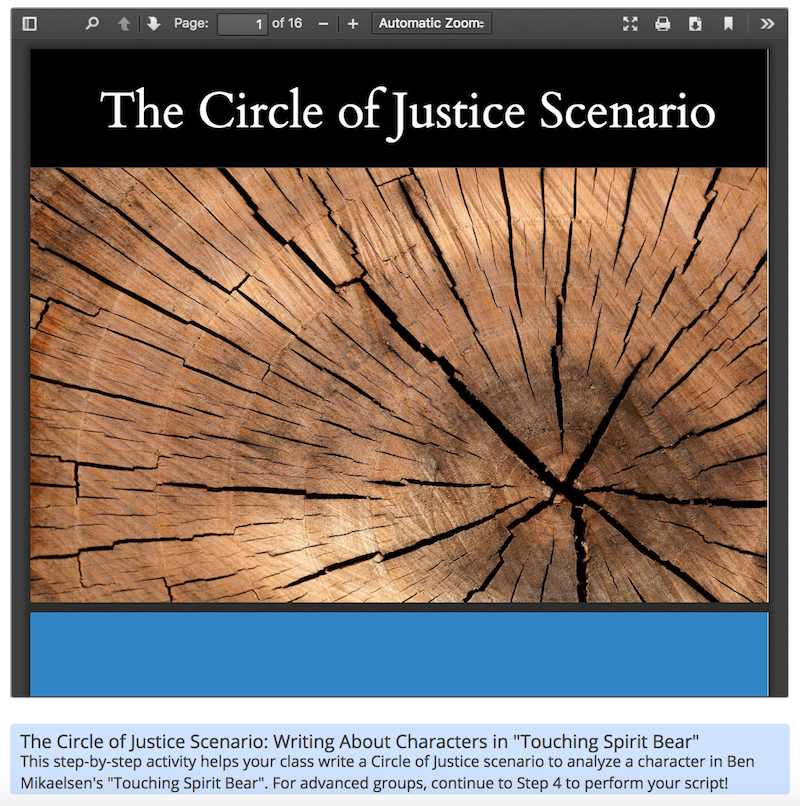
Science Lessons
The fascinating thing about science is that it’s everywhere, and we need to expose learners to their surroundings whenever possible. The unit featured in this session is about chemistry in cooking. It follows a similar structure as other subjects. A video and slideshow introduce basic terminology, and handouts and activities include group and individual work. The emphasis is on pacing lessons based on learners’ knowledge level. This unit ends with an experiment that learners can carry out in a lab or classroom. Learners can do this in groups.
Although we might not always think of it, it is quite easy to complete activities and experiments in the classroom with very few materials. The presenter encouraged educators to Google search for experiments they can do in the classroom. Educators can always bring the materials and have learners gather around while they take turns experimenting. The handout mentions activities like “two stray, one stay,” where learners compare/contrast conclusions. Educators can easily apply a KWL chart to any subject area.
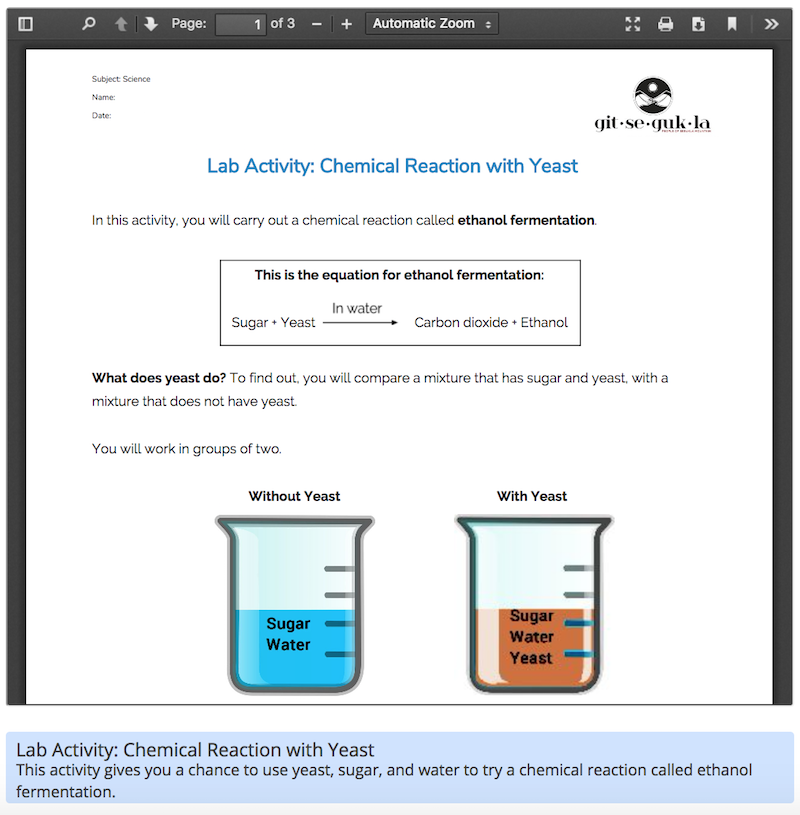
Social Studies Lessons
The last unit on sustainability was very interesting. Learners can use the featured resources as a template to learn about their community history and changes in the community. Invite Elders and Knowledge Keepers to share their knowledge and discuss it with learners. Learners then apply the research and knowledge to create a large-scale community map and plan.
The handout mentions activities like “stoplights,” which is an easy way to check for understanding. “Nothing ventured” has learners review material by answering a list of questions individually or in pairs. Educators can use “Timelines” as an anchor chart, or learners can create one from scratch as a project.
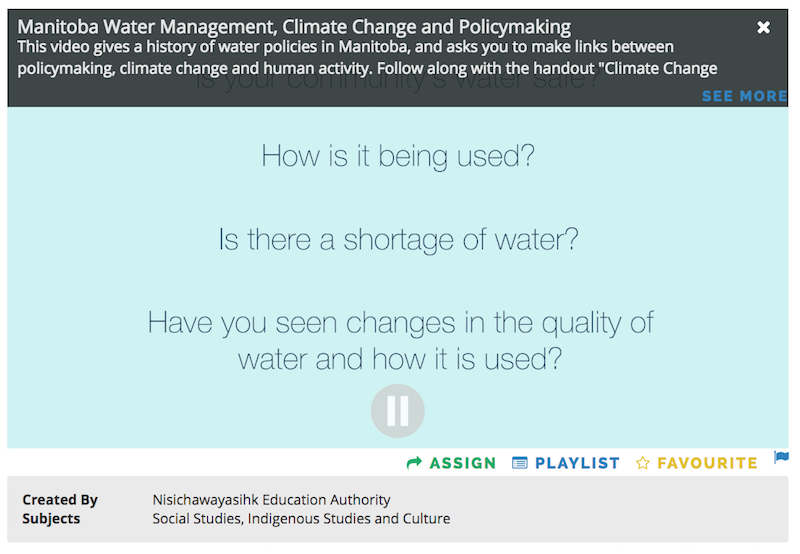
Make Activities Routine
The session ended with recommendations based on attendees’ questions. One recommendation was the importance of including activities as part of a routine, so learners become accustomed to specific activities. Eventually, there will be less focus on classroom management and more on learning and engagement. “Don’t give up!” said the presenters, as it will probably fail the first, second, and sometimes even third time. Once you figure it out, it will be worthwhile.
If you missed the webinar and would like a recording and copy of the handout, please reach out to your Education Account Lead or email achieve@learningbird.com.




